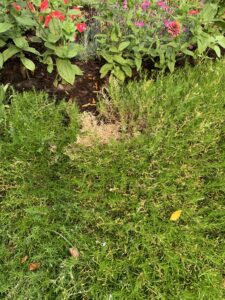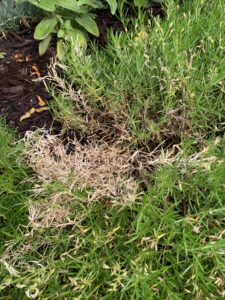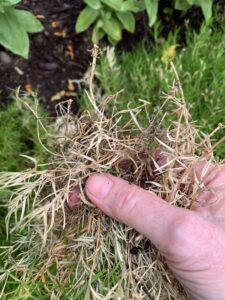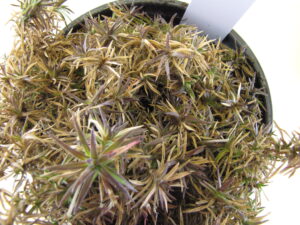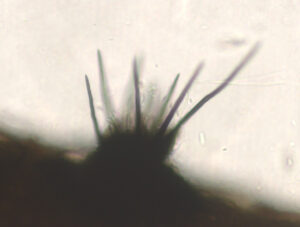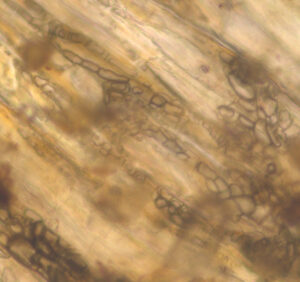Creeping phlox (Phlox subulata) has been a reliable mainstay in home landscapes for generations. This spring-blooming perennial is also known by a string of other common names, including flowering moss, moss phlox, moss pink, rock phlox, and thrift (not to be confused with sea thrift which is Armeria maritma).
Creeping phlox is native to a region extending from the Southeastern US into Canada, so it’s well adapted to many climates and tolerates drought and air pollution. Disease problems on this plant are rare, but we occasionally see dieback due to an anthracnose disease, caused by a fungus in the genus Colletotrichum (figures 1 and 2).
- Figure 1: Dieback (anthracnose) of creeping phlox caused by Colletotrichum
- Figure 2: Dieback (anthracnose) of creeping phlox caused by Colletotrichum
The symptoms show up as small areas of the planting become pale green, then change to tan or straw colored as stems eventually die. On closer examination of the base of the plant you’ll find gray to black leaves lower on the stems (figure 3). In nursery production entire plants may become blighted if leaves frequently stay wet (figure 4).
- Figure 3: Anthracnose damaged lower stems and leaves turn gray or black
- Figure 4: Nursery plants may be more severely affected due to frequent irrigation
A microscope view of leaves and stems shows the presence of fruiting bodies containing black needle-like structures, known as setae, which are characteristic of many Colletotrichum species (figure 5). The surface of lower stems are colonized by dark gray to black fungal hyphae (figure 6), which contributes to the gray or black color of infected tissues.
- Figure 5: Anthracnose fungi in the genus Colletotrichum are characterized by the presence of black needle-like structures called setae
- Figure 6: Hyphae of Colletotrichum colonizing lower stems
Anthracnose can appear rapidly in creeping phlox but damage in landscape plantings is usually limited unless plants are getting frequent rain or irrigation. Since creeping phlox is drought tolerant it should only very rarely need irrigation after establishment in the landscape which means that simply avoiding sprinkler irrigation will usually prevent the problem in most years. The plants shown in figure 1 were getting wet when the flower bed behind was irrigated. When foliage is dry, pull or clip out dead and dying branches as they appear and remove them from the planting to reduce the amount of fungus present next year. In nursery production good sanitation and reducing leaf wetness can help reduce spread, and several fungicides are labeled for control of Colletotrichum where needed.
